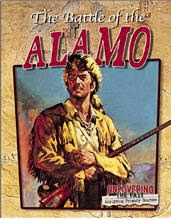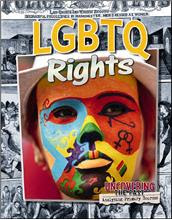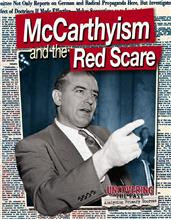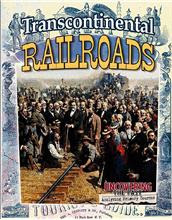| ________________
CM . . . . Volume XXIV Number 32. . . . April 20, 2018
Excerpt:
There are three reasons why you should take a careful look at the “Uncovering the Past: Analyzing Primary Sources” series. First, these books clearly explain and illustrate both how to evaluate sources of information and why we need to think critically about the sources we are using. With the quantity of information available to our students today increasing exponentially, it is vital that we teach them effective strategies for judging the quality of the information. Second, the “Internet Guidelines” included at the back of each book are clear and concise. The guidelines provide the reader with specific questions to help them when analyzing the quality and reliability of information they find on the Internet. For example, “Is the site well known and up to date? A page that has not been updated for several years probably has out-of-date information.” (From The Battle of the Alamo.) Third, each book includes a Bibliography that is really a list of citations for the quotations used throughout the book. It is important to the integrity of series that the books provide students with the necessary information to assess the reliability of the information in the books. Well done. Like the previous books in the “Uncovering the Past: Analyzing Primary Sources” series, the four latest books; The Battle of the Alamo, LGBTQ Rights, McCarthyism and the Red Scare, and Transcontinental Railroads, clearly explain and illustrate how to evaluate sources of information, and why we need to think critically about the sources we are using. The series uses eye-witness accounts, photographs, art work, illustrations, and newspaper reports, as well as songs of the period, to teach students how to think critically about their sources of information. Each book ends with a look at a present-day example of similar events, as evidence, sadly, that history does repeat. Identifying bias, prejudice, and perspective, and learning to examine more than one source of information are critical skills for students of the information age. Most importantly, the critical thinking and evaluating skills taught by looking at the records from the past are highly transferable to other research topics. Each book in the series begins with an introduction to the historic topic of the book, giving a context to the documents and artifacts that will be presented as source material. The initial chapter in each book also presents an explanation of why we need to learn about the past. The books then look at different types of evidence, giving examples of types of primary source material, and the distinction between primary and secondary source material. Unfortunately, some of the primary source material has reproduced poorly and is too indistinct to read clearly. Some of the archival material is poorly laid out on the page so that critical parts of the material are lost in the crease of the binding. Each book includes a table of contents, a timeline of events which includes a map, a bibliography, a glossary and an index. The Battle of the Alamo is not as relevant to Canadian school curriculum as other books in the series. The Battle of the Alamo looks at the problems of using primary source material in a foreign language and how to evaluate translations, but there is no Canadian aspect to the subject topic. The book does end with a short examination of U.S. – Mexican relations today. To try to control this [illegal immigration], in 2016, incoming president Donald Trump proposed building a giant wall along the United States-Mexico border. Thus the legacy of the Battle of the Alamo continues. LGBTQ Rights emphasizes the importance of considering bias when looking at both primary and secondary source material. The evidence for the fight for LGBTQ rights might contain a lot of bias because there are very divided views on homosexuality. Homophobia is the dislike and prejudice against homosexual people. Someone with homophobic views might give a very different report of a protest march, parade, or court battle. The book looks at the recent history of human rights, with a focus on the ongoing struggle for LGBTQ rights. Examples from around the world, including Canada, highlight the differences between the countries where LGBTQ rights are respected and those where such rights do not exist. McCarthyism and the Red Scare examines a relatively recent period of history with the first entry in the timeline at the back of the book being “March 1917 Russian revolution begins”. As a close ally of the US during the Cold War, Canada is mentioned several times. Following the Winnipeg General Strike of 1919, the Canadian government enacted Section 98 of the Criminal Code, a law used to suppress the activities of the Communist Party of Canada (CPC) throughout the 1930s. Due to the availability of source material on this topic, it is relatively easy to look for bias in both primary and secondary sources. There are things historians look for that indicate a source is biased: Transcontinental Railroads looks at the building of the railroads and their effect on the expansion of Canada and the United States. In the section “Evidence Revisited”, the problems faced by Indigenous peoples, Chinese laborers, and settlers are examined from a modern perspective. Students are guided to examine the archival photographs, magazine illustrations, posters, and written records from the time with questions such as: Take a close look at the illustration of the locomotives. How does the illustrator portray Native Americans? Do you think he shows a bias, or unfair opinions? What clues in the picture back up your answer? Overall, the four latest books in the “Uncovering the Past: Analyzing Primary Sources” series continue to be excellent resources for teaching students critical thinking skills to analyze sources of information in historic subject content. The development of these skills will be highly transferable to other subject areas. Because the historic content of some of the books is more directly applicable to Canadian school curriculum, you will want to consider the appropriateness of each book individually to get the best value for building your library collection. Recommended. Suzanne Pierson is a retired teacher-librarian, currently instructing Librarianship courses at Queen’s University in Kingston, ON. To comment on this title or this review, send mail to cm@umanitoba.ca.
|



